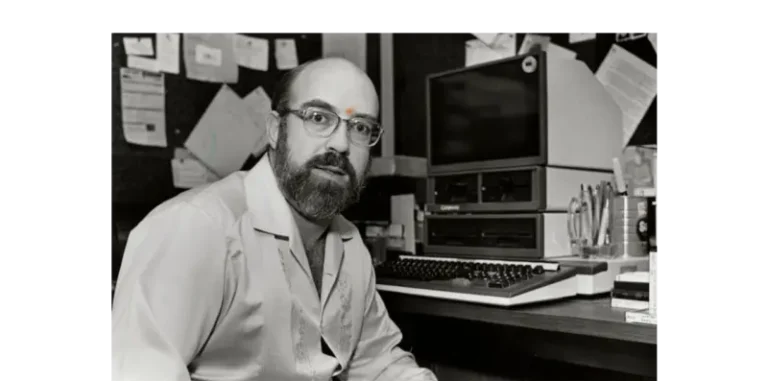Tired of Being an Order-Taker? Become a News Editor
A more active role will turn your communications department into a news-breaker.
Ben Bradlee, who steered The Washington Post newsroom for 26 years, including the Pentagon Papers and Watergate stories, once explained what an editor does while reflecting on his first job, which wasn’t in the news business.
His description of the role of an editor is a valuable insight to corporate communications executives and managers who run their own operations.
Fresh out of Harvard University, Bradlee served during World Ward II in the U.S. Navy aboard the U.S.S. Philip in the Pacific Theater. He ran a unit that didn’t even exist when the destroyer put to sea in 1942—the Combat Information Center.
The CIC was “one room crammed with all the radar, all the SONAR, all the radios, all the telephones, all the plotting equipment,” he wrote in “A Good Life: Newspapering and Other Adventures.”
In a battle, “all information came in to CIC, and CIC parceled it out as needed—to the captain, to the gunnery officer, and to the watch officer,” wrote Bradlee, who retired in 1991.
In an interview after the memoir was published in 1995, he said: “Some people have read the book and told me that what I described as the job of a CIC officer is what an editor is, too. That’s what editors do. They find out information, they get the best people they can find to do the heavy lifting, and then—instead of passing information to the skipper—they present information to the people.”
In newsrooms, the role of editor goes far beyond fixing sentences. Professional communication executives and managers who want to lead their organization’s messaging should approach their jobs more like their counterparts in newsrooms.
Editors work closely with reporters while they conduct interviews, gather information and write. They are sometimes called news editors to distinguish them from copy editors, who catch factual errors and clean up the writing.
Professional communicators too often act like copy editors when they could increase their impact on their organizations by modeling themselves after news editors.
We spend a lot of time studying great editors and effective newsroom management and use that expertise to help corporate clients set up their own news sites. Here are a few lessons comms executives and managers could learn from editors.
1. “Find out information,” as Bradlee said. The best editors see uncovering stories as an essential part of their jobs. They get out of the newsroom and talk to people to discover stories – and they direct their reporters to do the same.
Communicators frequently complain that they are treated as order-takers, responding to request after request from internal clients. Breaking that cycle is difficult, but that change must start with communication leaders. Don’t wait to be fed stories. Develop sources within your organization by building relationships of trust to encourage the exchange of information.
2. Preach the news-breaking gospel. A key tenet of Brand Journalism is that every organization should break its own news. That takes a team effort.
Katherine Graham, the publisher of the Post during Bradlee’s tenure, would come into the newsroom as the paper was being put to bed and ask him with glee, “Whaddya got? Whaddya got?”
With that same enthusiasm, reinforce the importance of breaking news in every conversation. Take a moment to shift gears and ask what writers are hearing. If it’s promising, come back to it later.
3. Talk to writers before they pitch. Every week should start with individual conversations with reporters about the week ahead: Why are the stories they’re working on newsworthy? What else do they have? Go through the options. Is there a better story to be done with more work? Settle on a story pitch for the week that satisfies the requirement of the pitch form.
4. Use a pitch memo. Corporate communicators spend a lot of time and energy on pitching stories to the news media, but less attention to their own criteria for what should be a press release, a brand journalism story or a social media post. Instead, like most newsrooms, develop a pitch form which includes a first draft of a headline, first sentence, as well as graphic and photo ideas. And tell us why your audience should care?
5. Set editorial guidelines. Many communicators are caught in the order-taker trap because there is no principled way to tell an internal client why something isn’t a story. No self-respecting news outlet does a story simply because someone else decided it was newsworthy. You shouldn’t either. Your time is too precious.
Editorial guidelines give you a framework for making these decisions: This is our audience, what they care about and want to learn from us.
6. Touch base. Once a story is assigned, check in with the writer. Is the story meeting the expectations laid out in the pitch? Are there holes in the reporting? Some writers need to be pushed to make that extra phone call.
So many problems in writing stem from problems in the reporting. News editors don’t wait until a story is filed to learn what those problems are.
7. Analyze the story. After Bradlee died in 2014, Evan Osnos, a former Post reporter, described what an editor does.
Bradlee’s “editorial genius wasn’t about rewriting ledes or changing adjectives,” he wrote in The New Yorker. “It was his unfailing sense of what made a story stronger. His questions were precise and invariably to the point.”
Ledes and headlines are important. But before tinkering with those, examine whether a story’s conclusions are well-supported. Are there unanswered questions? Is the logical structure strong?
8. Meet more often. When Bradlee became managing editor of the Post in 1965, he began holding two news meetings a day with the top editors. “Story conferences became the place to talk ideas, to express enthusiasms, to encourage initiative, to have some fun, to take chances, and generally to create the sense of excitement that seemed to be missing,” he wrote in his memoir.
For corporate news sites, we recommend three meetings:
- Monthly, to look down the road.
- Weekly, to review story pitches, set deadlines and plan pitches.
- Daily, to adjust plans based on what’s in the news media or on social media.
At first, this might seem like too many. But once the routine is set, the value will become apparent and the meetings will speed up. Keep focused. For God’s sake, don’t go around the room asking people to repeat everything they’re working on.
9. Enjoy the news. Being a news editor sounds like serious business, and it is. Bradlee, as portrayed in the movie “All the President’s Men,” seems like a hard-nosed journalist, humorless and demanding.
But he had another side, David Remnick, a former Post reporter and editor of The New Yorker, has written. “He was fun, the embodiment of how much fun journalism could be.”
Tom Corfman studied several great editors close up while working in the newsrooms of The Chicago Reporter, Chicago Tribune and Crain’s Chicago Business. He runs RCG’s Build Better Writers program.
Contact our client team to learn more about how we can help you with your communications. Follow RCG on LinkedIn and subscribe to our weekly newsletter here.







